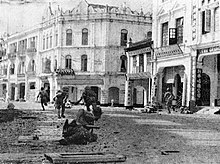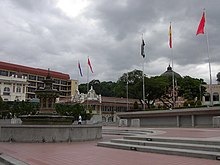Malaysia is the 66th largest country by total land area in the world, with a population of about 28 million and a land area of around 329,847 square kilometres respectively. By land, Malaysia borders Thailand in the west, and Indonesia and Brunei in the east. It is linked to Singapore by a narrow causeway. Malaysia also has maritime boundaries with Vietnam and the Philippines. The land borders are now well established and defined in large part by geological features such as the Perlis River, Golok River and the Pagalayan Canal, whilst some of the maritime boundaries are the subject of ongoing contention. Tanjung Piai, located in the southern state of Johor, is the southernmost tip of continental Asia. The Strait of Malacca, lying between Sumatra and Peninsular Malaysia, is arguably the most important shipping lane in the world.
The two distinct parts of Malaysia, separated from each other by the South China Sea, share a largely similar landscape in that both West and East Malaysia feature coastal plains rising to hills and mountains. Peninsular Malaysia extends 740 kilometres from north to south, and its maximum width is 322 kilometres. It is divided between its east and west coasts by the Titiwangsa Mountains. These mountains are heavily forested, and mainly composed of granite. The range is the origin of some of Peninsular Malaysia's river systems. It's coastline is nearly 1,931 kilometres long, although harbours are only available on the western side.East Malaysia, on the island of Borneo, has a coastline of 2,607 kilometres. The state of Sabah is divided by the Crocker Range, which is the location of Mount Kinabalu. Mount Kinabalu, at 4,095.2 metres (13,436 ft), is the tallest mountain in Malaysia and is protected as Kinabalu National Park, a UNESCO World Heritage Site. Malaysia contains numerous islands, the largest of which is Labuan. Its waters extend into the Coral Triangle.
Malaysia is a megadiverse country, with a high number of species and high levels of endemism. Two third's of Malaysia in forested, with a large amount of lowland forest present below an altitude of 760 metres (2,493 ft). East Malaysia, like most of Borneo, was traditionally covered with Borneo lowland rain forests although much has been cleared causing wildlife to retreat into the upland rain forests inland. Malaysia's rainforest's are made of a variety of types, although they are mainly dipterocarp forests. These forests contain the Rafflesia, the largest flower in the world. Although the forests are in decline, some state governments have taken measures to halt this. Besides rain forests, over 1,425 square kilometres of mangroves in Malaysia.
Kuala Lumpur is the official capital and largest city of Malaysia. Putrajaya is the federal administrative capital. Although many executive and judicial branches of the federal government have moved there (to ease growing congestion within Kuala Lumpur), Kuala Lumpur is still recognised as the legislative capital of Malaysia since it houses the seat of the Parliament of Malaysia. It is also the main commercial and financial centre of the country.







